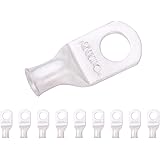Underground installations (see Appendix B)
1) Direct buried cables or raceways shall be installed to meet the minimum cover requirements of Table 53.
2) The minimum cover requirements shall be permitted to be reduced by 150 mm where mechanical protection is placed in the trench over the underground installation.
3) Mechanical protection shall consist of one of the following and, when in flat form, shall be wide enough to extend at least 50 mm beyond the cables or raceways on each side:
a) treated planking at least 38 mm thick;
b) poured concrete at least 50 mm thick;
c) concrete slabs at least 50 mm thick;
d) concrete encasement at least 50 mm thick; or
e) other suitable material.
4) Direct buried cables shall be installed so that they run adjacent to each other and do not cross over each other and with a layer of screened sand with a maximum particle size of 4.75 mm or screened earth at least 75 mm deep both above and below the conductors.
5) Where cables rise for terminations or splices or where access is otherwise required, they shall be protected from mechanical damage by location or by rigid conduit terminated vertically in the trench and including a bushing or bell end fitting, or other acceptable protection, at the bottom end from 300 mm above the bottom of the trench to at least 2 m above finished grade, and beyond that as may be required by other Rules of the Code, and with sufficient slack provided in the cables at the bottom end of the conduit so that the cables enter the conduit from a vertical position.
6) Where a deviation has been allowed in accordance with Rule 2-030, cables buried directly in earth shall be permitted to be spliced or tapped in trenches without the use of splice boxes.
7) Raceways or cables, if located in rock, shall be permitted to be installed at a lesser depth entrenched into the rock in a trench not less than 150 mm deep and grouted with concrete to the level of the rock surface.
8) Raceways and armoured or metal-sheathed cables suitable for direct burial shall be permitted to be installed directly beneath a concrete slab at grade level, provided that the concrete slab is not less than a nominal 100 mm in thickness, the location and depth of the underground installation is marked in a conspicuous, legible, and permanent manner, and the raceway or cable is not subject to damage during or after installation.
9) Any form of mechanical protection that may adversely affect the cable shall not be used.
10) Backfill containing large rocks, paving materials, cinders, large or sharply angular substances, or corrosive material shall not be placed in an excavation where such materials may damage cables, raceways, or other substructures, prevent adequate compaction of fill, or contribute to corrosion of cables, raceways, or other substructures.
11) The initial installation shall be provided with a suitable marking tape buried approximately halfway between the installation and grade level, or adequate marking in a conspicuous location to indicate the location and depth of the underground installation.
12) Where underground raceways or cables are subject to movement by settlement or frost, provision shall be made for the prevention of damage to the conductors, conductor insulation, or the electrical equipment.
13) For installations not covered by the foregoing requirements of this Rule, the requirements of CSA C22.3 No. 7, or the applicable Standard, whichever is more stringent, shall apply.
Source: Rule 12-012, CSA C22.1:21, Canadian Electrical Code, Part 1 (25th Edition), Safety Standard for Electrical Installations. © 2021 Canadian Standards Association. Please visit store.csagroup.org





